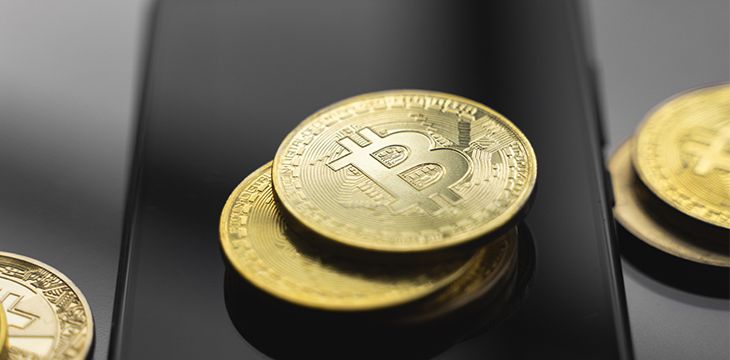|
Getting your Trinity Audio player ready...
|
This article should really be called the tale of three Bitcoin: BTC, BCH, and Bitcoin SV (BSV). But that title doesn’t have a nice ring to it, and in conversation, not many people seem to be concerned about BCH being a threat to Bitcoin SV. So for that reason, we will only be taking a look at BTC and BSV in this article.
Many BSV supporters often compare the two networks. They put BTC head to head with BSV and believe we live in a world where only one of these networks will survive. However, I don’t think that’s the case—at least, not for the foreseeable future.
My prediction: Bitcoin SV and BTC can coexist for years to come as they do not compete at all. Anonymous tokens will slowly be banned in most major countries and the rest of the platforms will become irrelevant as they do not scale and BSV does everything better than they do.
— Calvin Ayre (@CalvinAyre) September 17, 2019
I think a good portion of Mr. Ayre’s statement is correct; BTC and BSV don’t compete. I also think the part about anonymous tokens being banned is true, and that other blockchains are going to lose relevance—although for a different reason than the one Calvin states, but we’ll save that story for another day.
Why BTC and BSV will co-exist
Modern-day utility in BTC is that it is an alternative investment vehicle that has striking similarities to gold; for this reason, many people call BTC “digital gold.” Although Bitcoin SV also has that property (digital gold), the utility in BSV comes from it being an infrastructure protocol that can be used to create the internet of value.
They don't compete, only one scales and can be used for earn and spend economy so you can build applications only on original #Bitcoin #BSV….not competitors.
— Calvin Ayre (@CalvinAyre) September 18, 2019
Alternative for gold
Today, BTC is primarily used as an investment vehicle. Although there was a point in time when it’s primary use-case was a pseudo-anonymous payment rail, those days are over. The government has cracked down on Dark Net Markets, and users of those markets have turned away from BTC to digital currencies that give them more privacy.
In addition, BTC’s technical limitations, such as 1MB blocks, make it difficult for developers to build businesses and programs on top of the network, so for that reason, not many are interested in building atop BTC.
So if BTC is seeing a very small amount of activity as a payment rail, and if it’s not being used as an infrastructure protocol, then what is it being used as? Many will tell you that it is being used as an alternative to gold.
BTC is similar to gold, but has many advantages; it has a finite supply, and it acts as a hedge against inflation, but it is easier to carry, is highly divisible, and is relatively liquid just like physical gold. Individuals who purchase BTC are primarily doing it for investment purposes. In other words, they are speculating on BTC and believe it will be more valuable in the future than it is today due to its similarities—and advantages—to gold among many other reasons that they might have.
Internet of value
And then we have the internet of value, which at the moment, can only come to fruition by using BSV in your stack. BSV does everything that BTC was supposed to do since it is not restricted by technical limitations. This gives companies the ability to create businesses and applications that empower consumers. Several companies are using BSV to build applications and platforms that give consumers ownership of the data they create online, the ability to monetize that data, censorship resistance, and increased transparency.
Why both will survive
BTC and BSV will survive for at least two reasons:
1. they serve different purposes, and
2. they capture different audiences.
BTC attracts the majority of the individuals who are interested in an alternative investment vehicle. At the same time, BSV captures the lion’s share of developers who would like to build a market-disrupting business. Although BSV has all of the same properties of BTC (without the technical limitations), we cannot overlook that BTC was first to market. I say that to say this, people—especially newcomers—are going to be more familiar with the item that hit the market first before they become familiar with the alternatives that followed.
That is why we continue to see the individuals interested in an alternative investment gravitate toward BTC before they even consider that BSV is a viable option. And why highly technical individuals who have been a part of the cryptocurrency communities and markets for quite some time gravitate toward BSV.
Final thoughts
At the end of the day, both BTC and BSV are going to be around for many years to come. In all honesty, the two don’t compete, and they captivate different audiences. One is primarily being used as an alternative investment vehicle. The other is being used to create the companies and programs that could ultimately disrupt many modern internet applications as we know it, bringing us closer to a world with an internet of value that empowers the end user.
It is easy to get caught up in a dispute, even an echo-chamber, regarding why only one of these blockchain networks will survive. But when you talk to the average person, especially a no coiner who is interested in jumping into the crypto-markets, they are going to have no idea what someone means when they say that only one coin will survive. While BSV is considered the original Bitcoin now that BTC forked off taking its ticker symbol deviating from Satoshi’s whitepaper to create its own unique protocol, both blockchains will exist for some time since neither compete head to head anymore.

 01-01-2026
01-01-2026 




